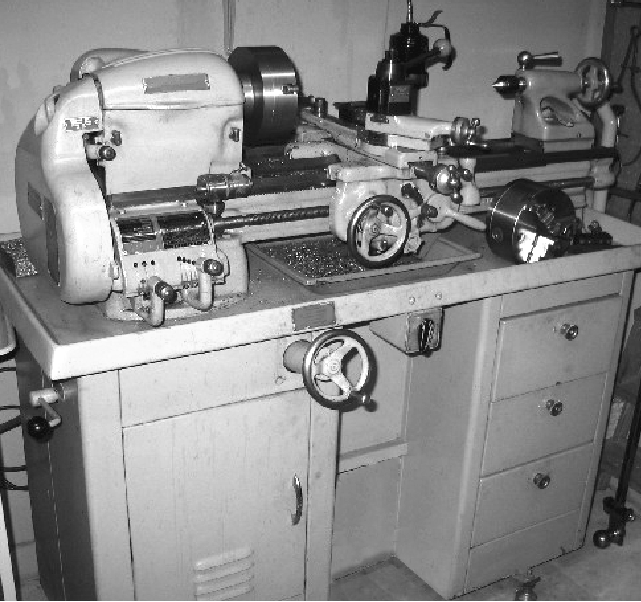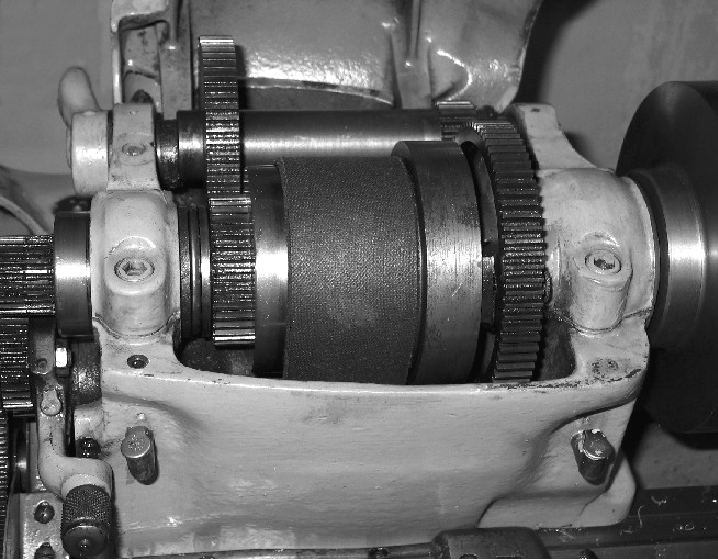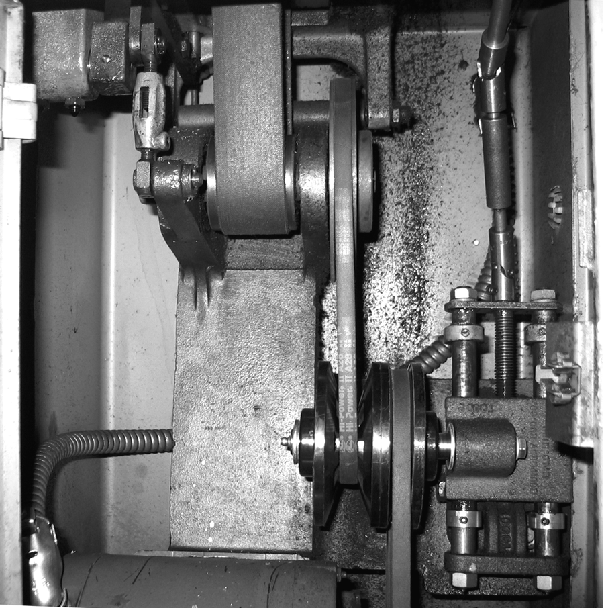|
Sold as Catalog No. CL222 the rare South Bend 10-K "Light Ten" lathe with infinitely variable-speed drive. With its extra-large micrometer dials and taper-turning unit this lathe was particularly well specified.
The lathe was offered only during 1966 and 1967, with the South Bend variable-speed unit being very similar to those adapted for use on Rockwell-Delta and Sheldon lathes. The unit used expanding and contracting pulleys side-by-side on a common, overhung shaft and was of a type known in the UK as the "Ainsworth", after its Victorian inventor. Many similar devices have been offered over the decades by such as Browning, Gerbing, Lewellen, Lovejoy, Maurey, Reeves, Speed Selector and T.B. Woods - and are still available today as a Google search will confirm.
The South Bend assembly was a self-contained unit, very heavily built and carried on a cast-iron frame bolted into a sheet-steel cabinet. A handwheel on the front of the stand controlled the mechanism through a universally-joined shaft and screwed rod that moved the vari-speed pulley assembly up and down a pair of vertical bars positioned between a fixed motor and fixed final-drive shaft. Forcing the unit in either direction caused the tension of the two belts to simultaneously open and close their pulleys and so vary the drive ratio. From the expanding and contracting pulleys the drive passed up to a shaft, mounted in bearings on a swinging plate, that carried a single pulley from which the headstock spindle was driven by an enormously wide flat belt. Tension of the final drive belt could be adjusted independently by a right-and-left-hand-threaded turnbuckle.
To save the expensive of a electric revolution counter the long handwheel boss was provided with a sliding pointer to indicate spindle r.p.m and is possible that, like those used on Delta-Rockwell lathes, a mechanism could have been incorporated to limit maximum speed when the lathe was used for training apprentices - and especially in schools.
|
|





